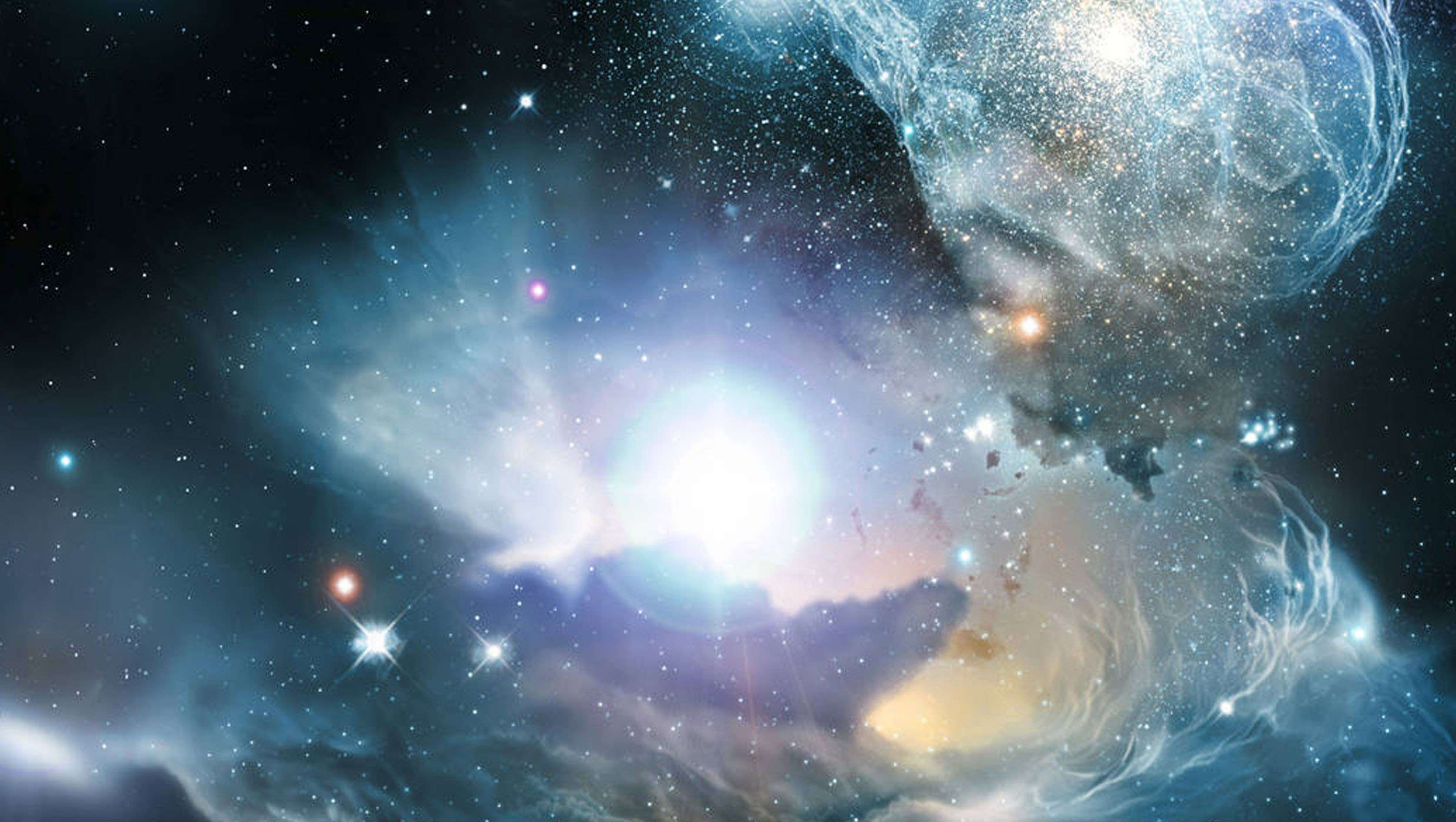Create a free profile to get unlimited access to exclusive videos, sweepstakes, and more!
Gargantuan lunar telescope could show us when the universe first got lit 13 billion years ago

What really would be the ultimate telescope? Would it be able to see aliens waving to us from an unknown exoplanet, or possibly peer back through the eons to the beginning of time?
The Ultimately Large Telescope was an idea NASA hit pause on a decade ago. Astronomers from the University of Texas are now trying to revive and redesign it, to make this lunar telescope see even further into space—and further back in time—than James Webb will. It could glimpse an era 13 billion years ago when there were no galaxies yet but the first individual stars formed, or “first light”. These unique stars that keep eluding astronomers were up to a hundred times larger than the Sun. The telescope’s mirror, a rotating disc covered in highly reflective liquid mercury, could detect that first light billions and billions of light years away.
“Even with [the James Webb Telescope], the first stars will remain out of reach, as they are born in small minihalos with luminosities too faint to be detected even by the longest exposure times,” said Volker Bromm, who coauthored a study recently published in The Astrophysical Journal.
Those stars that remain out of sight are known as Population III (Pop III) stars. If the Ultimately Large Telescope, formerly the Lunar Liquid-Mirror Telescope, actually comes to life, its liquid mirror technology (as opposed to the coated glass most other telescopes use) would give it the most powerful eye out there. Its mirror is thought to end up being a staggering 328 feet across if this thing actually comes to life. While that seems immense, the lighter liquid mirror will make it easier to fly to the moon than lugging around a scope with a glass mirror, and a lighter payload weight also means a lower launch cost. The Ultimately Large Telescope would hang out in a crater on one of the Moon’s poles and gaze through space and time.
Stars that first lit up the dark are so sought after because they are signs of a huge transition that happened after the Big Bang. Pop III stars are mostly made of hydrogen and helium with traces of the metals lithium and beryllium. Their gaseous composition means that none of that gas had been left over from previous star formation events and re-incorporated into these stars. It had come directly from the Big Bang. Observing them will allow astronomers to rewind to the moment of that transition. Their appearance meant that the universe we inhabit had started evolving from a primordial wasteland to something at least as complex as the human brain. Intelligent life, which would be us, eventually arose on at least one planet. Earth might not be alone.
There’s just one problem. No Population III star has ever been seen, which makes them just about as hypothetical as aliens for now.
Some astronomers believe that Pop III stars have long since exhausted their fuel and now exist only as astral corpses like white dwarfs, neutron stars or black holes. Their remains might be sprawled across space as supernova remnants. However, if a telescope can proverbially squint hard enough see a star 13 billion light years away, it would not be seeing that star as it is now but at or close to the moment of first light. The Ultimately Large Telescope’s disc of liquid mercury would spin at an angle, on a vertical axis, which would give it a parabolic surface with an extremely precise focus.
We probably have a better chance of seeing the earliest stars glinting in the void than taking a phone call from intelligent aliens. Even so, if the light of one of these ancient stars is still en route to the Moon, it could be a while.


























